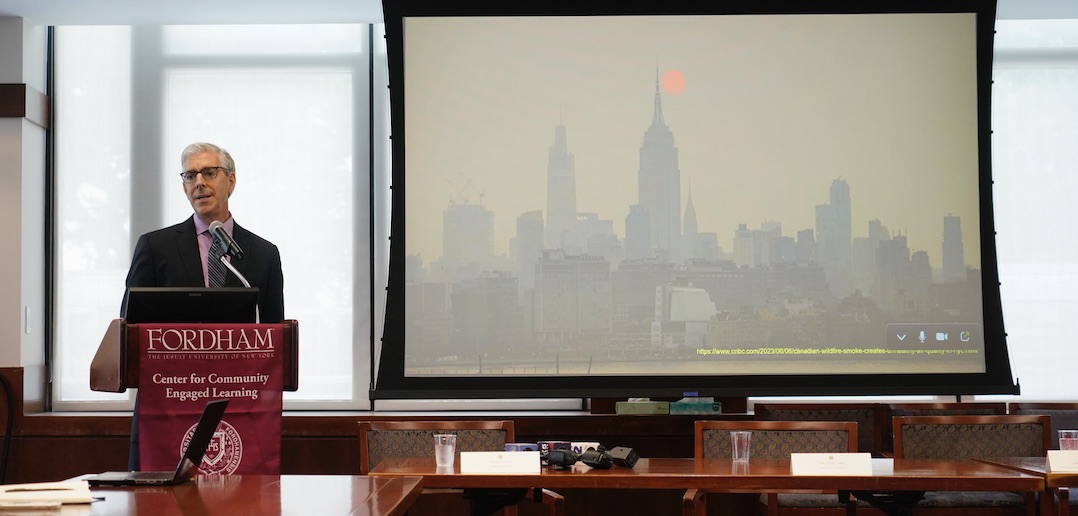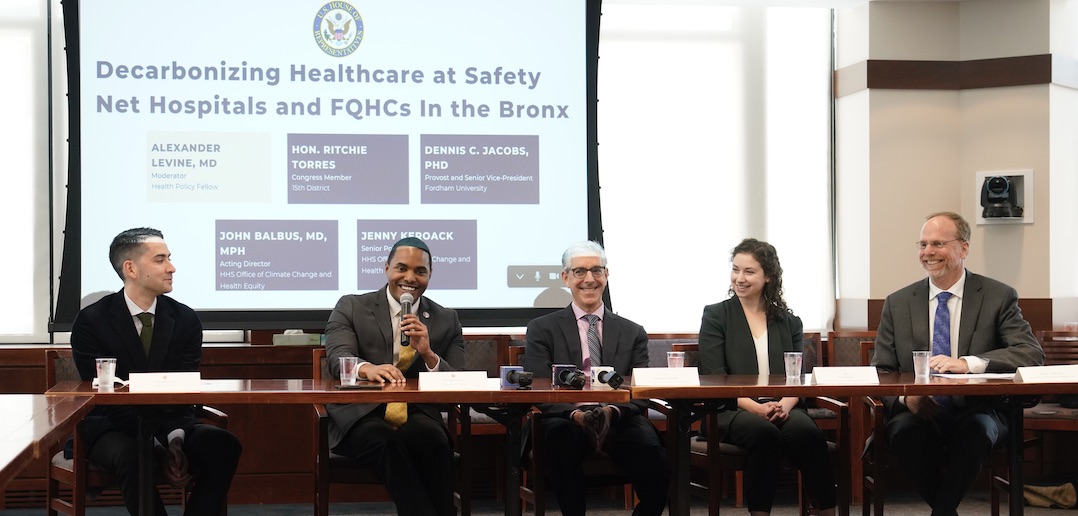“Nowhere is it more critical than here in the Bronx,” said Ritchie Torres, the U.S. representative for New York’s 15th congressional district that covers most of the South Bronx, an area with notorious levels of air pollution and high asthma rates. “For me, it’s not only about environmental protection. It’s about public health.”
The forum, which was sponsored by Fordham’s Center for Community Engaged Learning, took place on June 9—coincidentally, just several days after New York City recorded its worst air quality on record.
“The extreme air pollution that we have seen firsthand here in the Bronx is a glimpse of what can happen if we do nothing or do too little to combat climate change,” said Representative Torres. “This is not speculation. This is reality.”

The Inflation Reduction Act, a new climate and tax law signed by President Joseph Biden last year, is designed to combat climate change, in part by providing monetary incentives to individuals and businesses. This is relevant to the Bronx and its health care sector, which has the power to play a big role in decarbonizing the borough, said Representative Torres.
“The road to decarbonizing America is going to run through the health care sector because you are the largest employers in the Bronx and elsewhere in the country,” he said, addressing about 20 Bronx health care leaders at the forum. “Twenty-five percent of the Bronx economy is health care; 10% of greenhouse gas emissions is coming from the health care sector.”
Using a PowerPoint presentation, members of the federal Office of Climate Change and Health Equity explained how they are assembling the most relevant parts of the Inflation Reduction Act for the health sector in an online quickfinder, where they can learn more about and take advantage of tax incentives, direct pay provisions, and grants.
Opal Dunstan, chief operating officer of VIP Community Services, a community health center in the Bronx, said the forum was helpful, but voiced caution.
“At least we know that the federal government sees the correlation between what’s happening outside and how it impacts the organizations that we operate, but in order to do the things we need to do to address [climate change], we need to have money. … We’re in old buildings and we need to upgrade, but these things have costs,” said Dunstan, adding that she will examine the quickfinder and research tax incentives and grants that could benefit her community center. “It was good information, and hopefully it will help us.”


